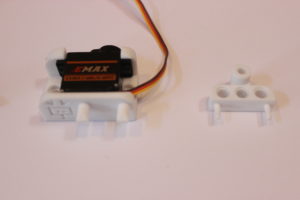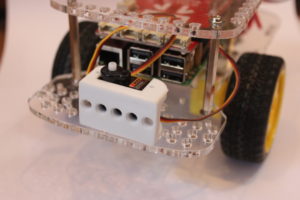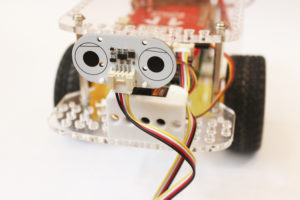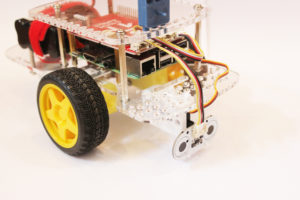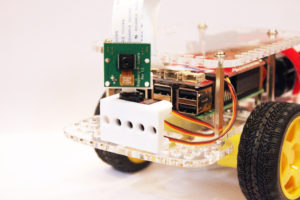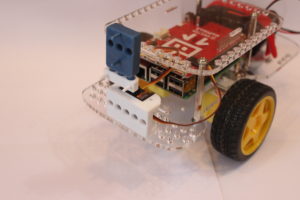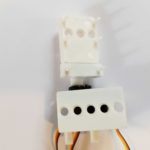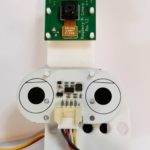Getting Started Guide

Table of Contents
Parts
- GoPiGo Chassis
- Rechargeable Battery Pack
- DexterOS microSD card
Attach the Motor Brackets
Section Goal
In this section, you will attach the motor brackets to the acrylic body. When complete it should look something like this.
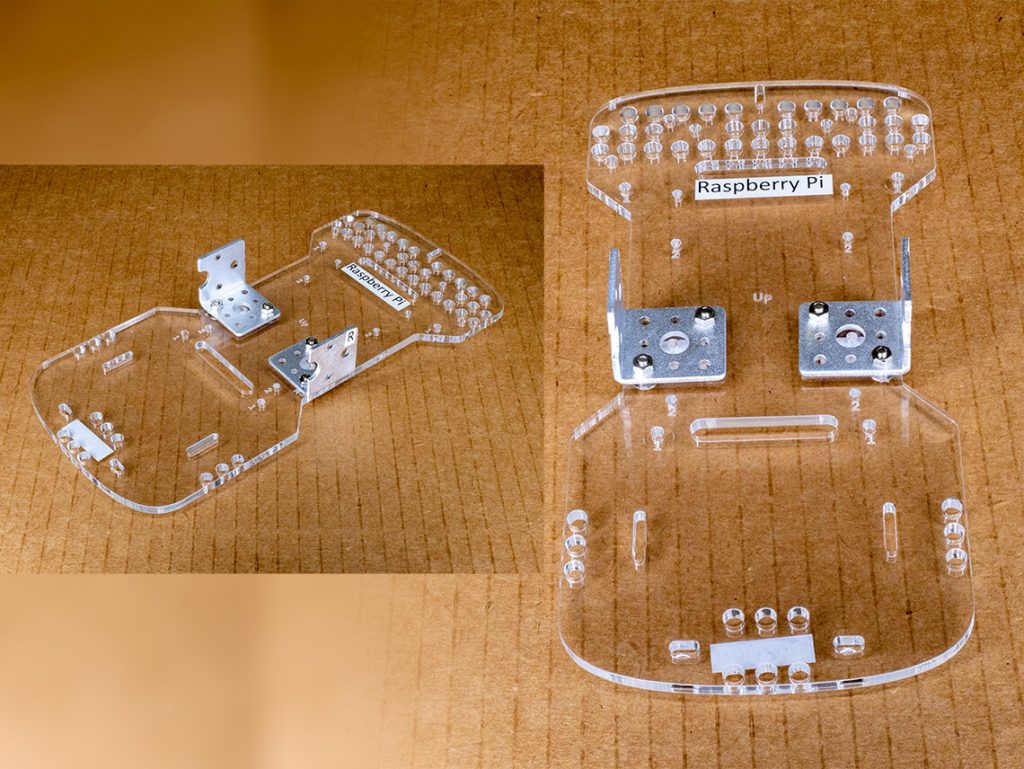
Get Oriented
Parts
- Acrylic Body
- Motor Hardware Bag
Steps
Place the acrylic body on your building surface. Identify the front and back of the robot (hint: the back has fewer holes).
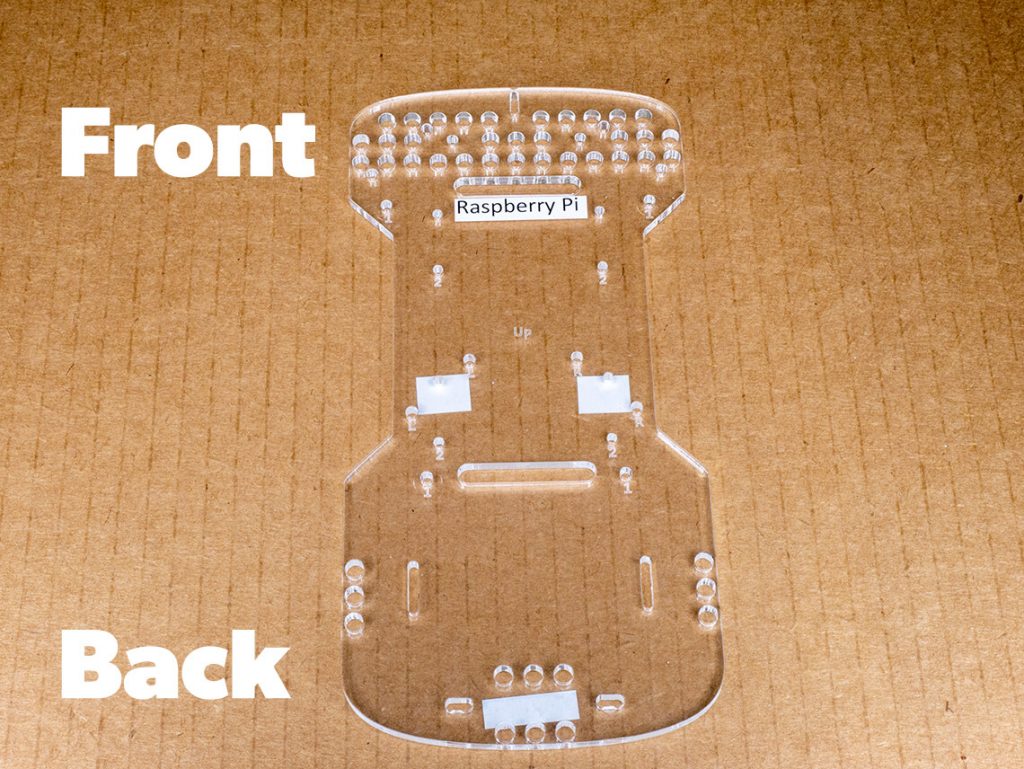
Set both motor brackets on top of the acrylic. The square side should be resting flat against the acrylic, with the half-moon elevated and facing the back of the robot. The bend in the bracket should be aligned to the outer edge of the acrylic.
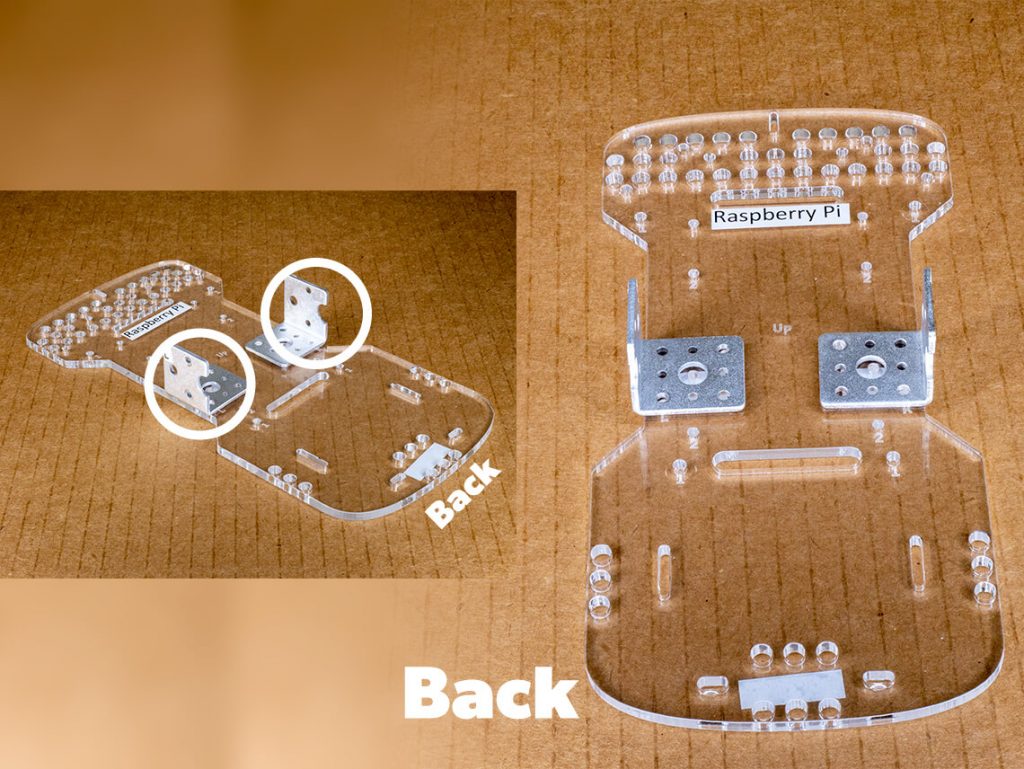
Gently lift the Left Bracket to check if it is resting on holes labeled “L”. If so, Start Building! If not, set your brackets to the side, flip your acrylic over like you are turning the page of a book. (The front and back should stay the same!).
Now set your brackets on top of the acrylic again and check that the Left matches with L and the Right matches with R.

Start Building
Set the right bracket aside. Place washers on two of the short screws. Then gently lift the acrylic, with the Left Bracket still resting on top, and insert the screws from the bottom, pointing up.
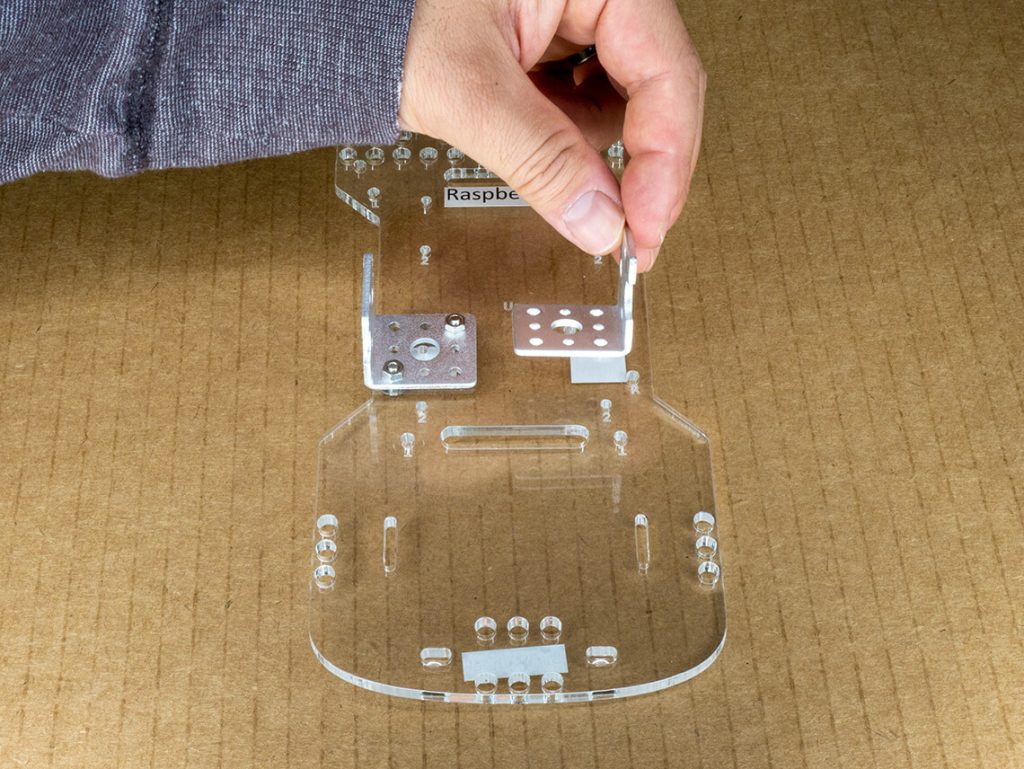
Thread a nut from the top, onto the end of each screw. Hand tighten.
Repeat this step for the Right Bracket.
When the nuts have been hand tightened, flip the whole assembly over. The brackets should be touching your building surface. Now use the screwdriver to tighten each screw until the washer is flattened. You might use a pair of needle-nosed pliers to help hold the nuts while you tighten the screws.
The brackets are now attached to the bottom of the robot.
Prepare the Robot
Section Goal
In this section, you will attach the posts that will support the Raspberry Pi and the canopy for your robot.
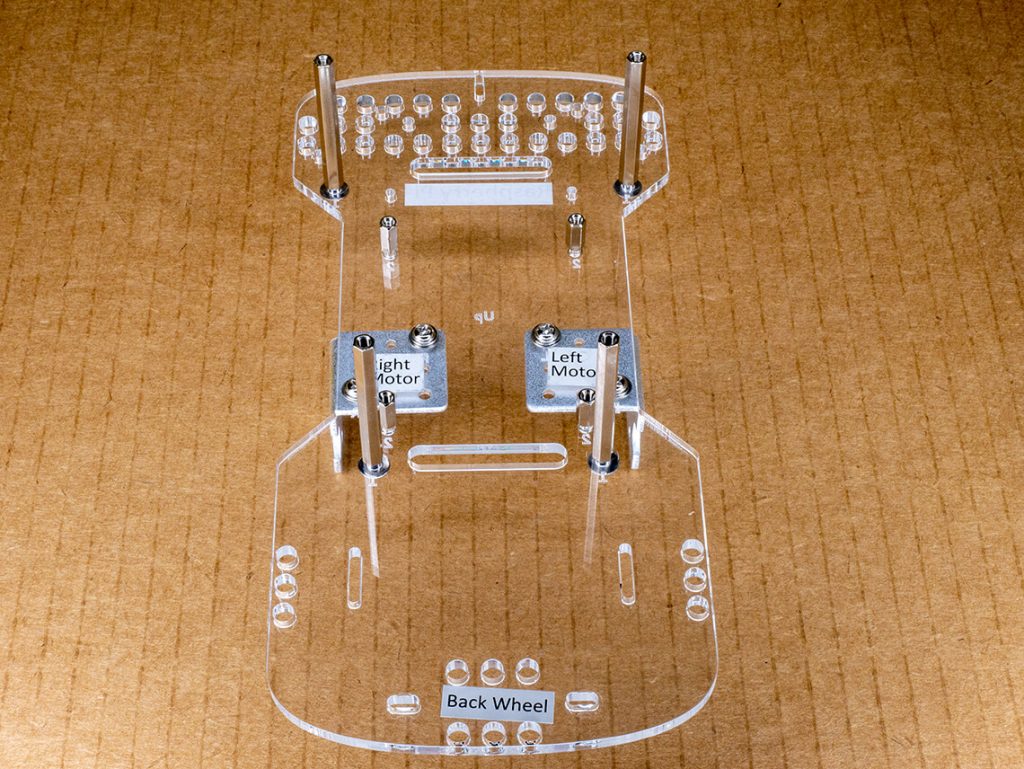
Prep for the Raspberry Pi
Parts
From the Controller Hardware Bag:
- 4 Short Screws
- 4 Short Silver Posts
Steps
Find the 4 holes that make a square in the middle of the acrylic.
These holes are labeled with a “2” on the acrylic body.
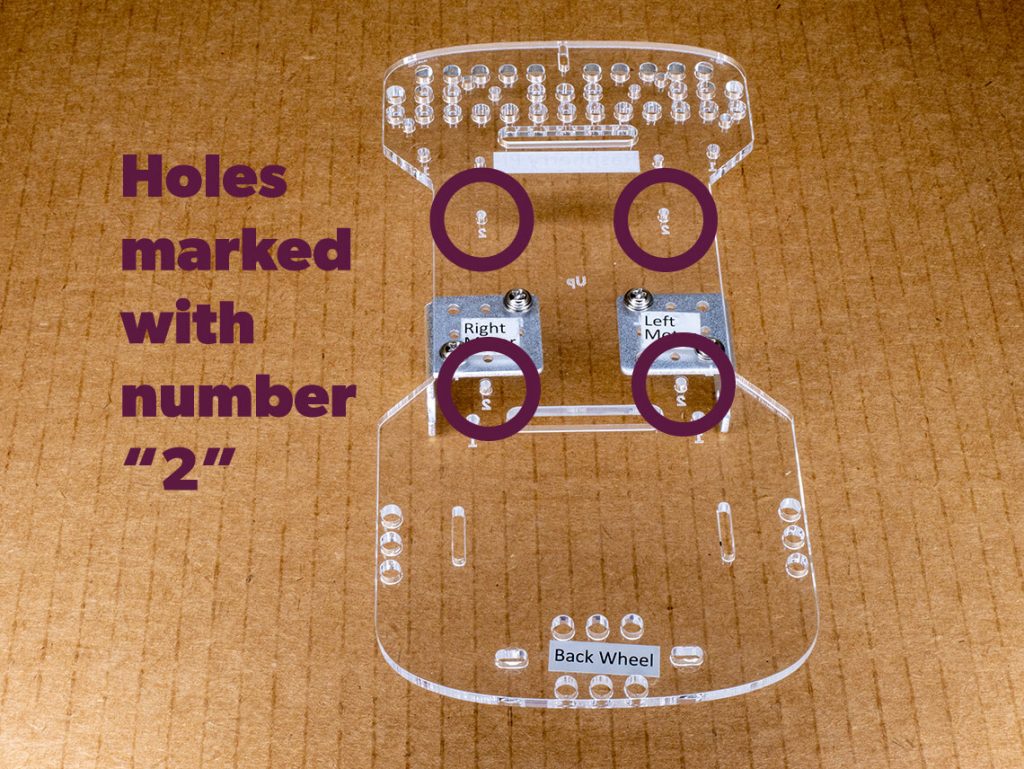

Place the screws up from the bottom of the acrylic, then attach the four short silver posts to the top of the acrylic.
Hand tighten the posts.
Prep for the Acrylic Canopy
Parts
From the Acrylic Hardware Bag:
- 4 Medium Screws
- 4 Washers
- 4 Long Silver Posts
Steps
With the brackets still touching your building surface, find the four holes for the canopy support posts. They will be labeled “1” on the GoPiGo3 acrylic body.
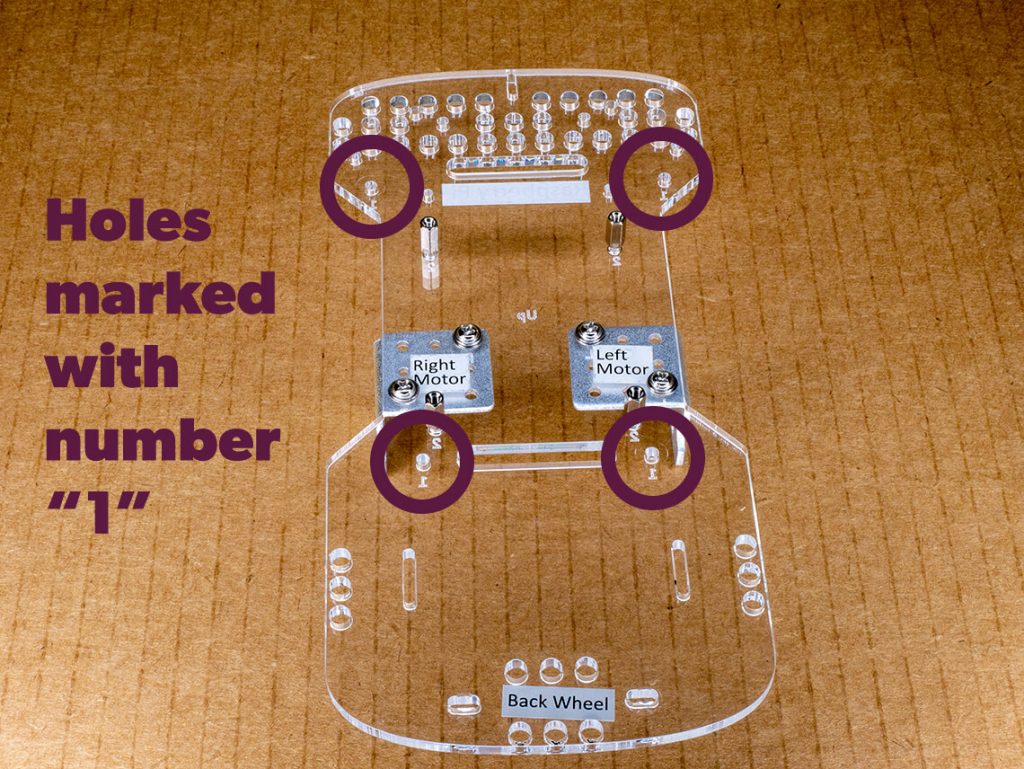
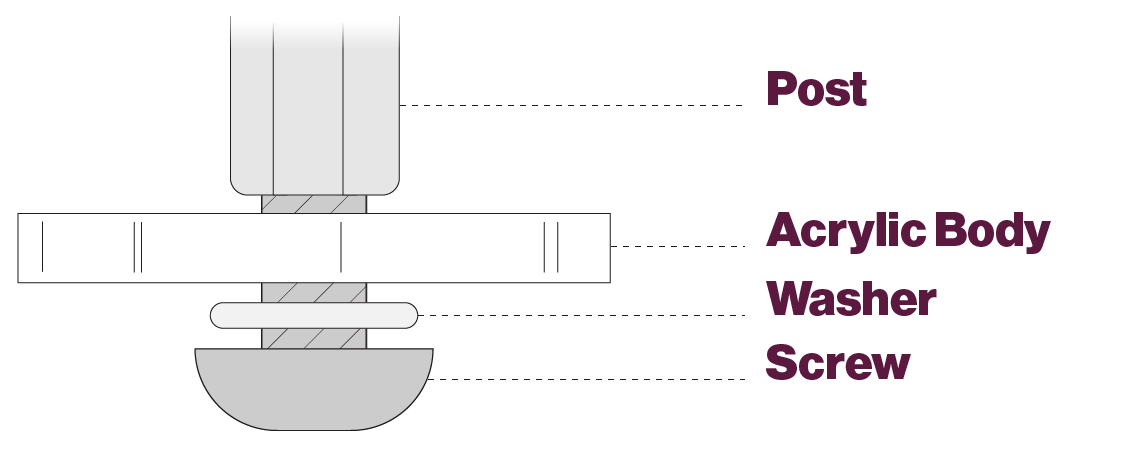
Slide washers onto the four short screws.
Insert the screws (with washers on them) up from the bottom of the board, then attach the four long silver posts to the top of the acrylic.
Tighten the posts until the washers flatten. You may need to use the screwdriver for this step.

Table of Contents
Attach the Wheels
Section Goal
In this section, you will attach the motors, caster wheel, and wheels to your robot.
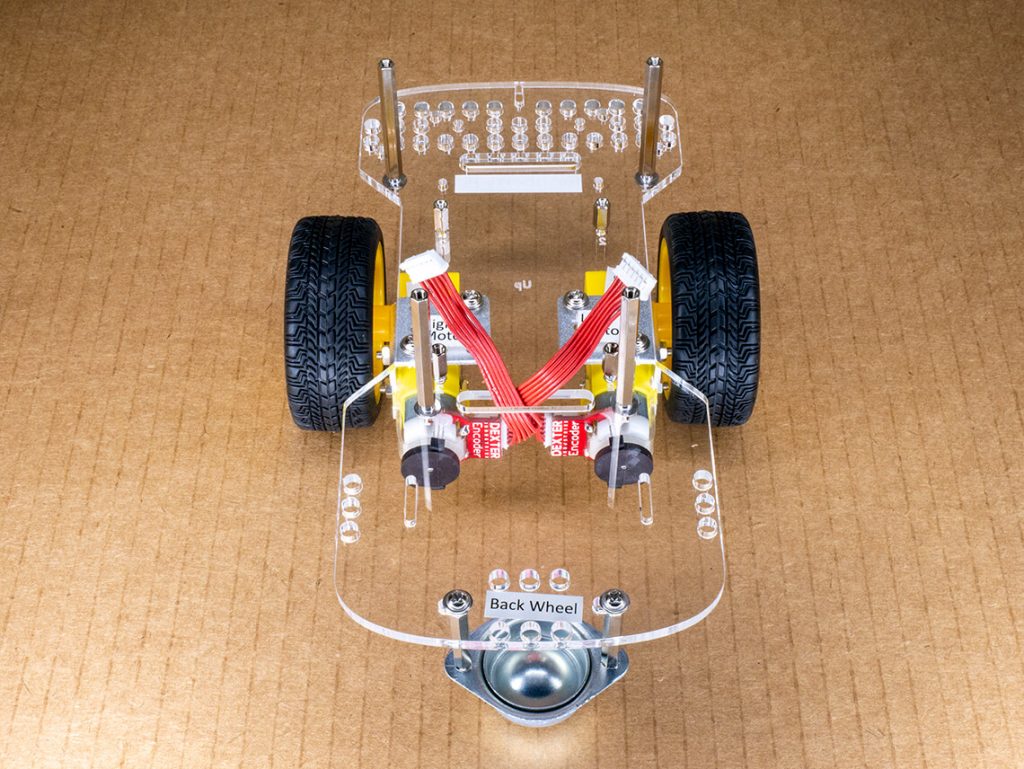
Attach the Motors
Parts
- 2 Yellow Motors
- 2 Red Cables
From the Motor Hardware Bag:
- 4 Long Screws
- 4 Washers
- 4 Nuts
Steps
Attach the red cables to the yellow motors.
The cables will only attach in one orientation.
The GoPiGo is designed to be assembled and disassembled, so if you ever need to change the motors, you’ll be able to.

Put the washers on the screws.
Slide the long screws into the motors from the side where the wire is connected as shown in the picture.
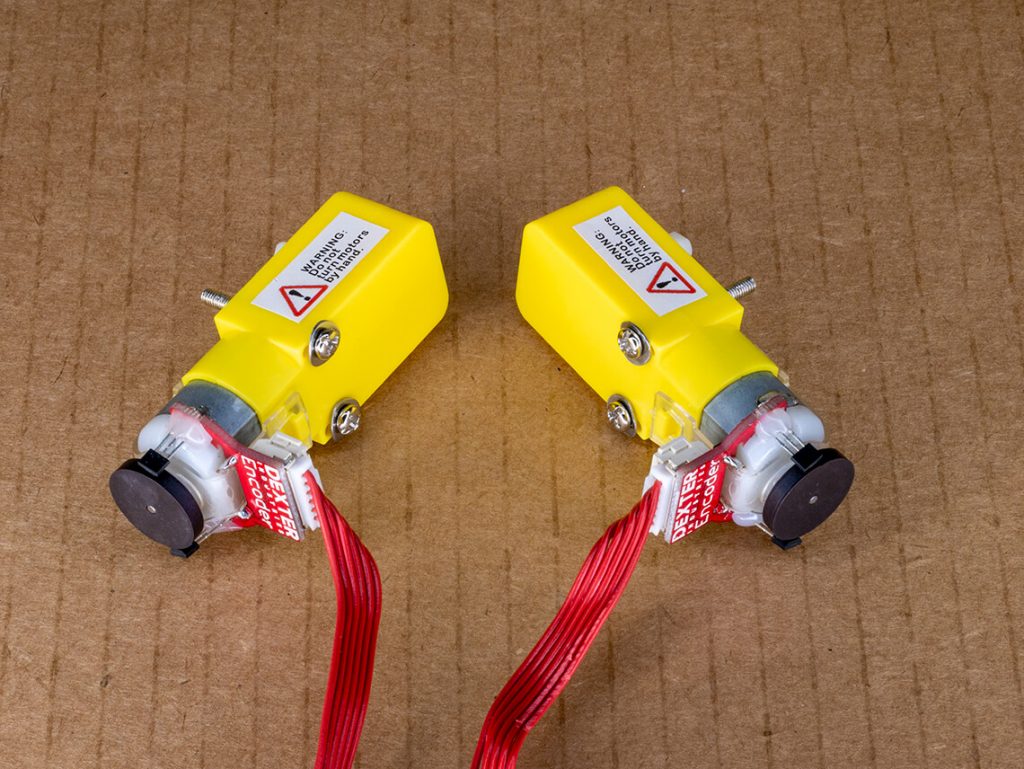
Turn the acrylic body over so the metal motor brackets are pointing up and the acrylic is resting on your building surface.

Set each yellow motor inside a motor bracket.
The red wires should be facing inward, nearly touching each other.
The ends of the screws should fit through the motor bracket and extend beyond the edge of your robot.
To check your work, make sure the black circle encoders are facing the back of the robot.
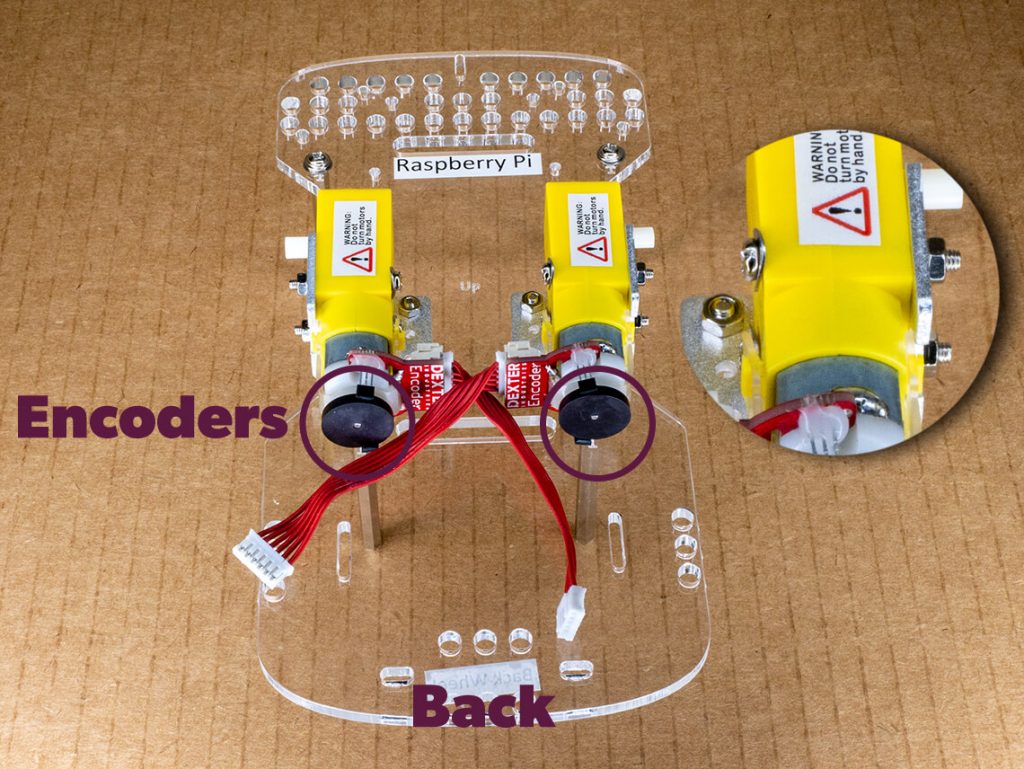
Attach the nuts to the screws, tighten until the washers flatten.
Slide both motor cables through the acrylic board using the rectangular slot.
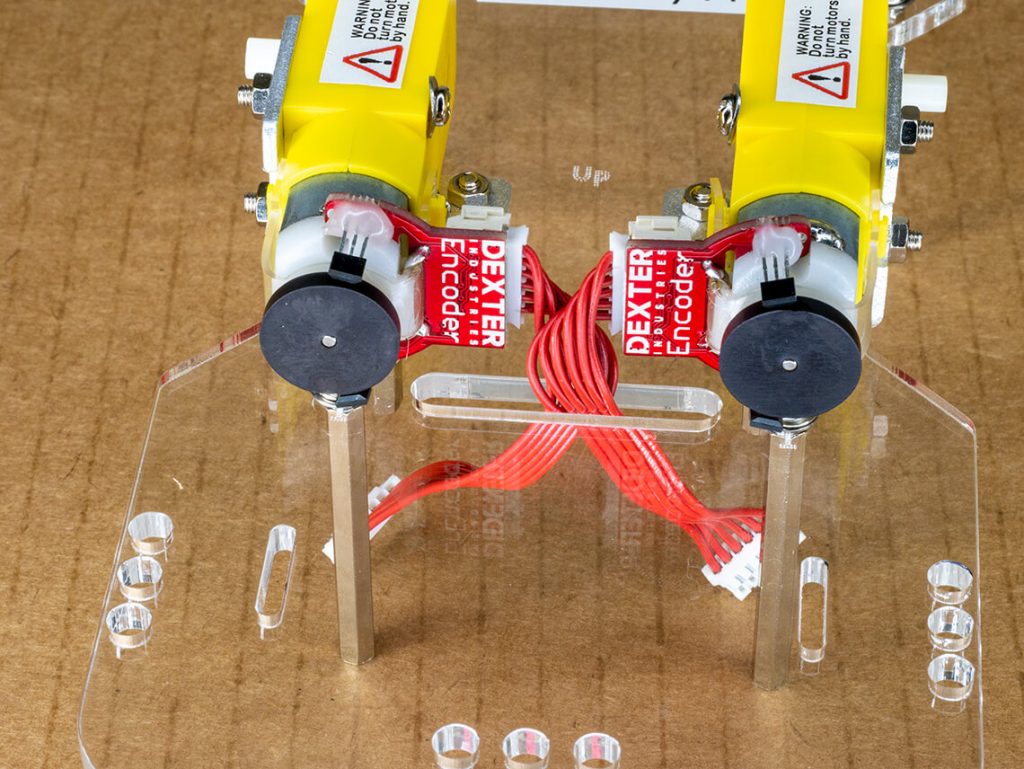
Attach the Caster Wheel
Parts
From the Caster Hardware Bag:
- 1 Caster Wheel
- 4 Short Screws
- 4 Washers
- 2 Medium Silver Posts
Steps
Place a washer on all four screws, and use two of them to screw the two medium silver posts into the caster wheel.
The posts should stick out the opposite side from the caster wheel itself.
Tighten until the washers are flat.
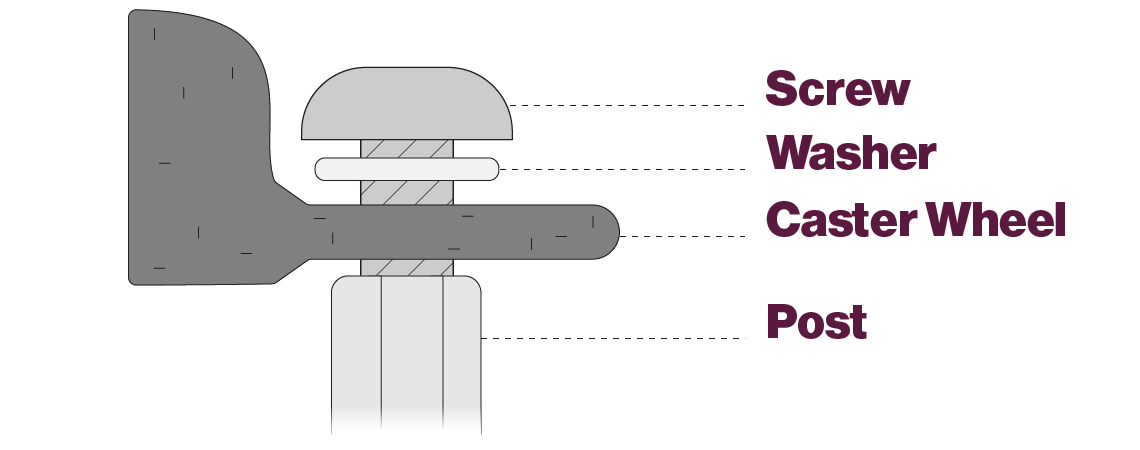
Flip the acrylic robot body so the yellow motors are touching your building surface. At the back of the acrylic, there are two short oval holes.
Slide the caster wheel underneath these holes so the wheel is touching your building surface.
Attach two screws from the top of the acrylic.
Tighten the screws until the washers are flat.
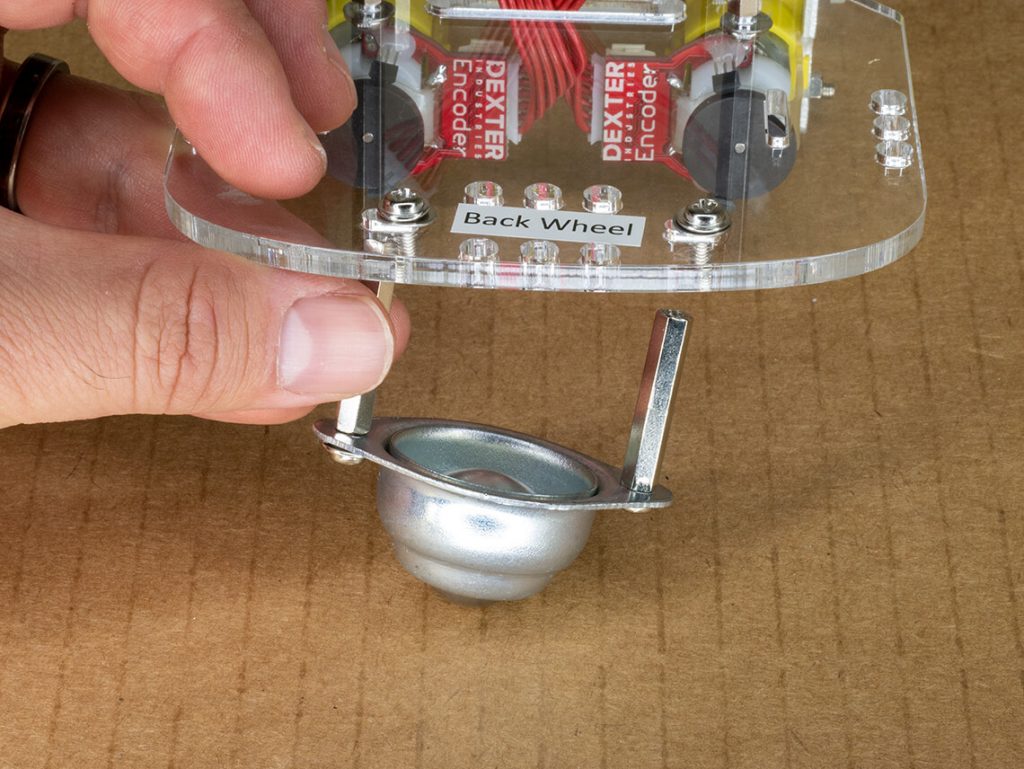
Attach the Wheels
Parts
From the Motor Hardware Bag:
- 2 Yellow Wheels
- 2 Small Acrylic Spacers
Steps

Slide the two acrylic spacers onto the white plastic axles on the motors.
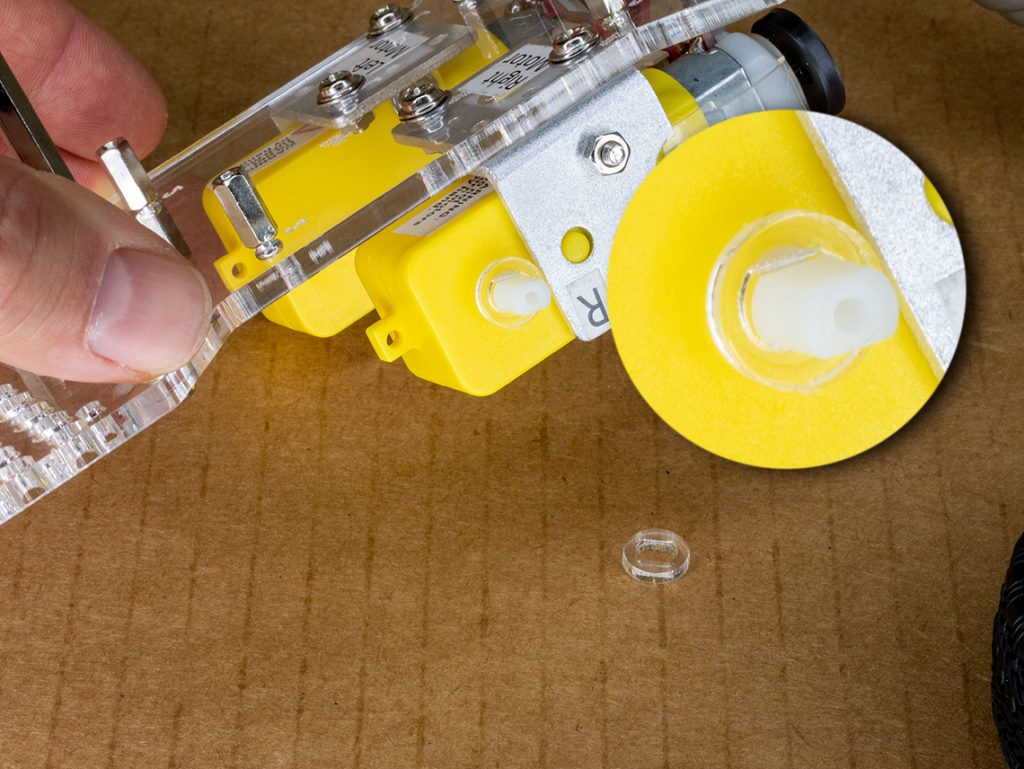
Then, slide the two yellow wheels onto the axles of the motors.


Table of Contents
Attach The Controllers
Section Goal
In this section, you will attach the Raspberry Pi and GoPiGo Red Board.
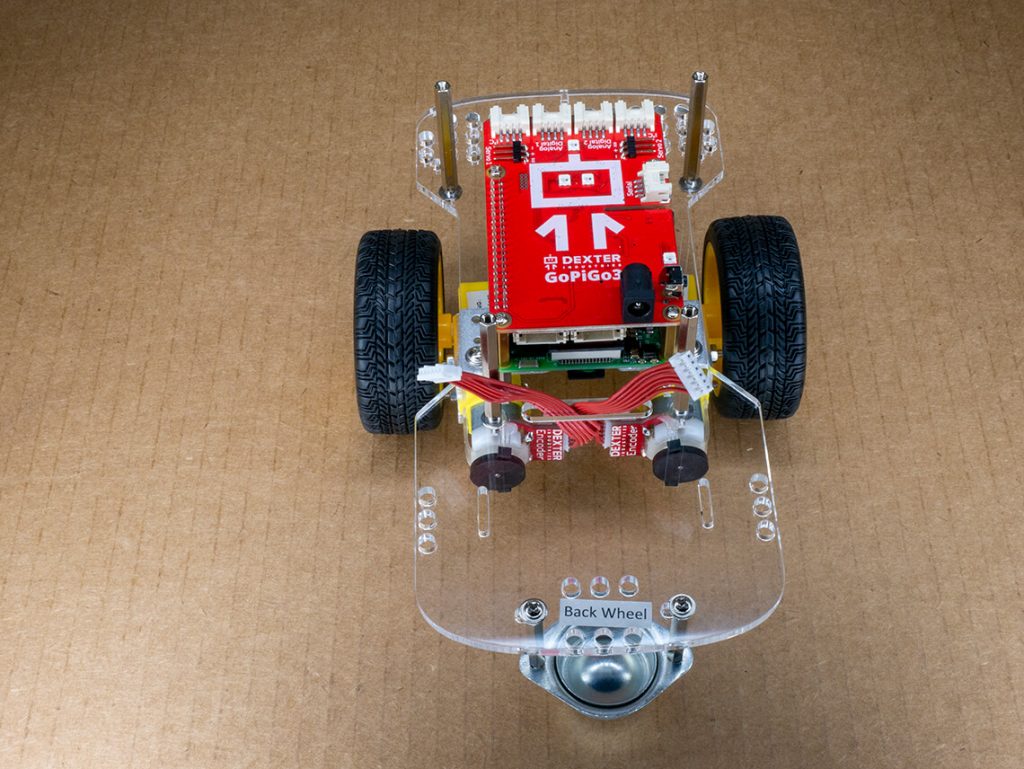
Prep Your Pi
Parts
- 1 Raspberry Pi (green)
- 1 microSD Card
Steps
Turn the Raspberry Pi upside down, so the metal pins are pointing down.
Slide the microSD card into the slot on the bottom of the Raspberry Pi. Make sure it is in all the way.
The SD card will only fit in one orientation.

Turn the Raspberry Pi face up, so the metal pins are pointing up.
Attach the Raspberry Pi
Parts
- 1 Raspberry Pi (green)
- 4 Gold Posts
- If you are attaching the Camera, please click here to follow special instructions before finishing your assembly.
Steps
Align the Raspberry Pi over the short silver posts sticking out of the acrylic body.
The pins on the Raspberry Pi should point upwards (as shown in the picture). The end with the SD card should face the back of your robot, which now has the caster wheel.

Screw the gold posts through the Raspberry Pi from above, and into the short silver posts. Hand tighten.

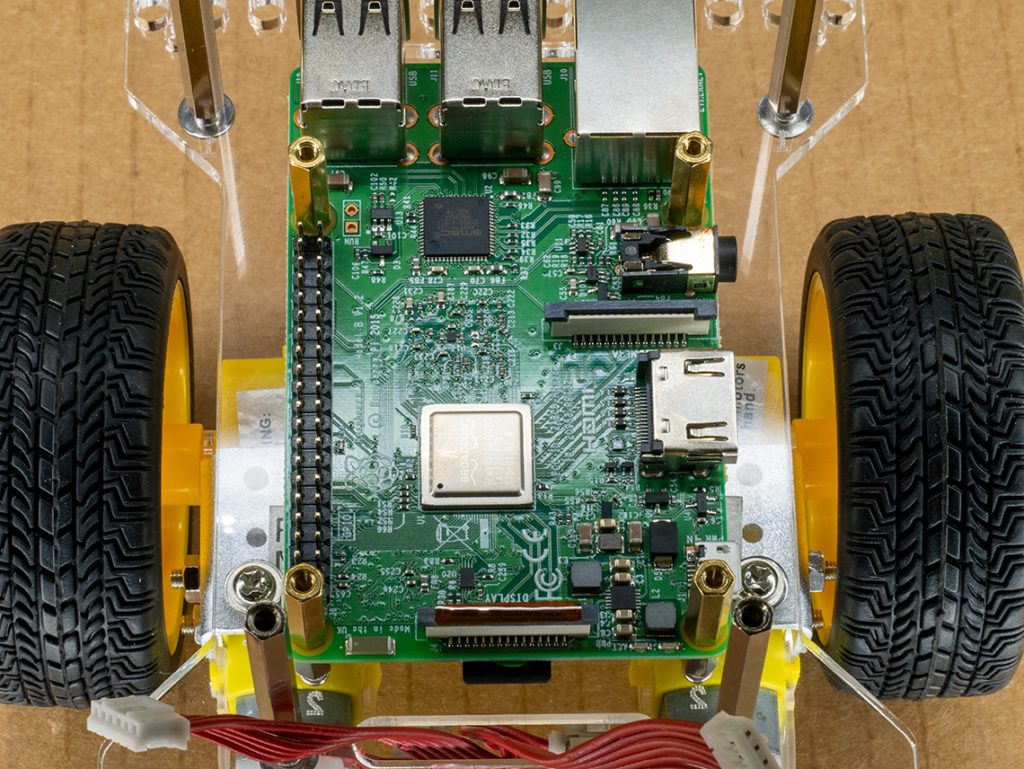
Attach the GoPiGo Red Board
Parts
From Controller Bag:
- 1 GoPiGo Red Board
- 4 Mini Screws
Steps
Take the foam off the pins of the red board.
The GoPiGo3 is shipped with foam on the GPIO pins to prevent them from being bent.
Be sure to remove the foam before proceeding to use your GoPiGo!
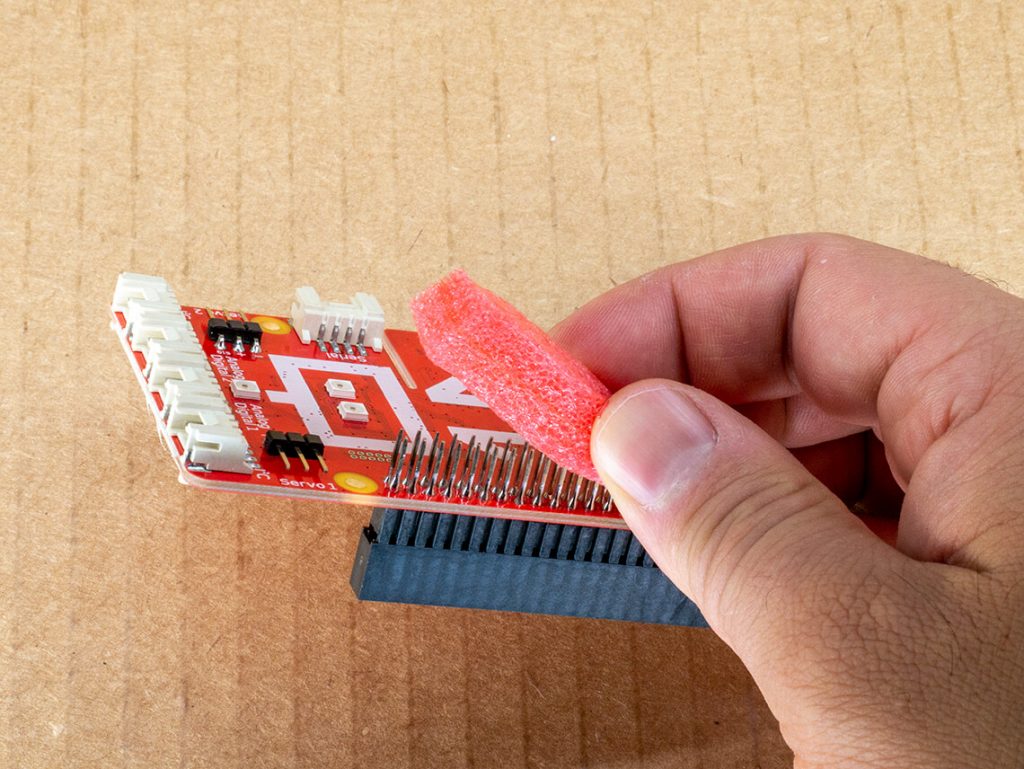
Align the black pin port on the red board to the Raspberry Pi pins sticking up, and slide the red board onto the Raspberry Pi.
Press down gently until the board slides on securely.
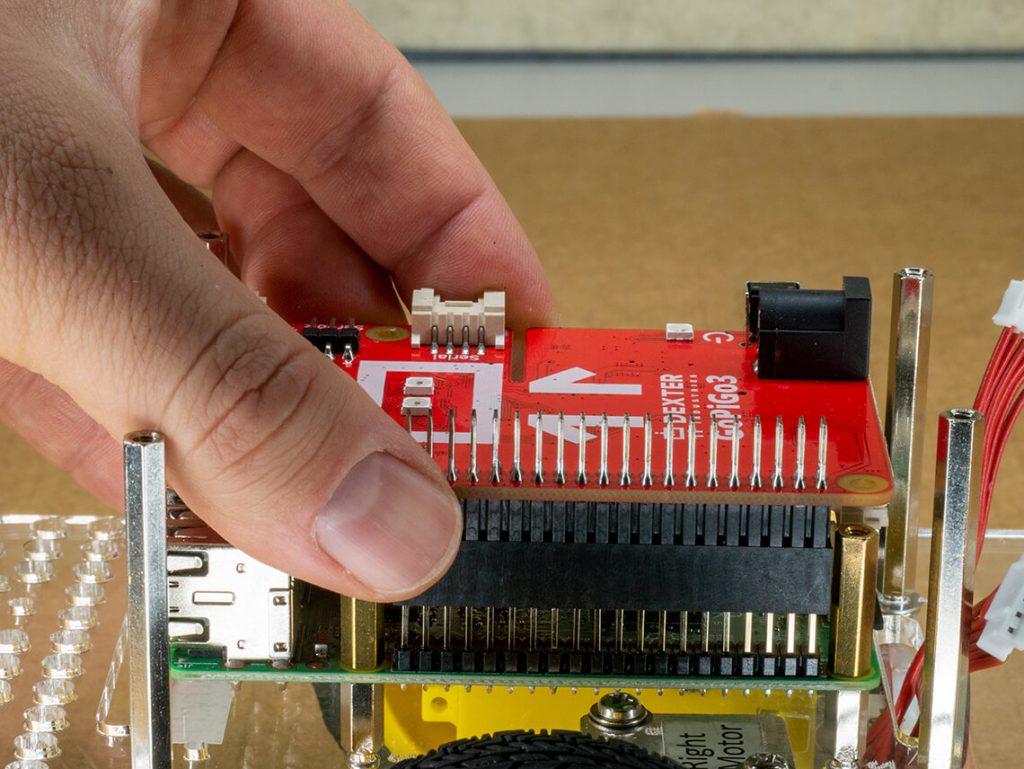
Use the 4 screws to secure the red board to the gold posts.
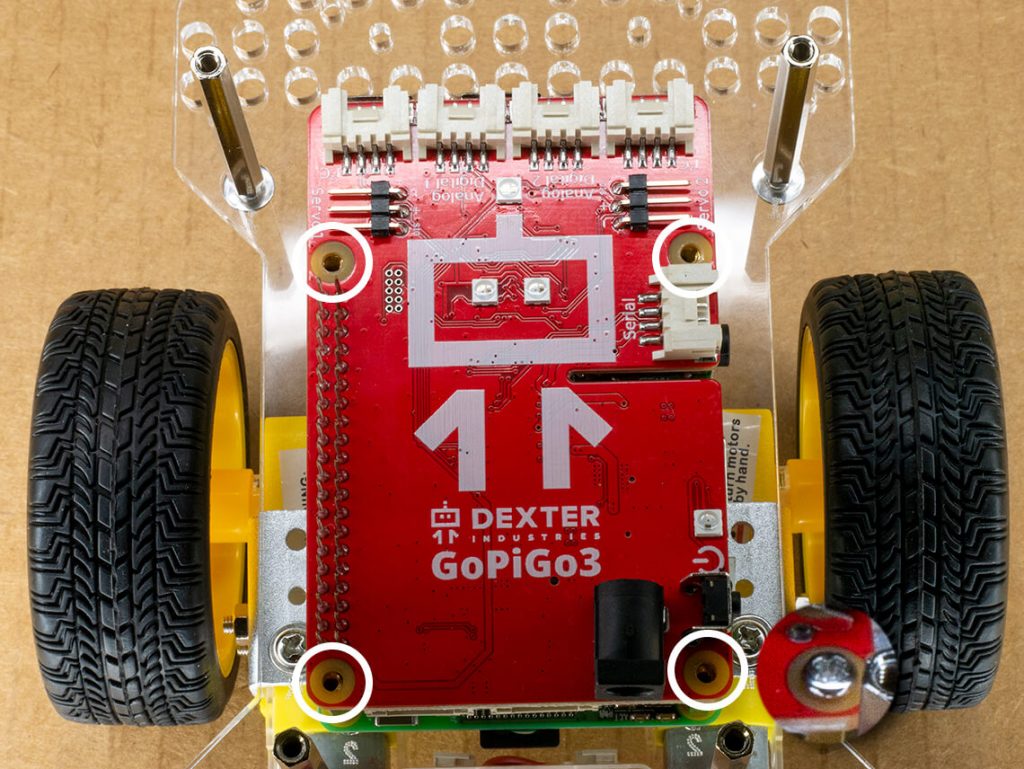
Final Touches
Section Goal
In this section you will connect the motor cables to the GoPiGo Red Board, attach the canopy, and hook up the rechargeable battery pack.
Attach the Motor Cables to Board
Steps
Connect the motor cables to the GoPiGo3 Board.
The cables can only be oriented in one direction.
The connectors need to be pushed in fully.
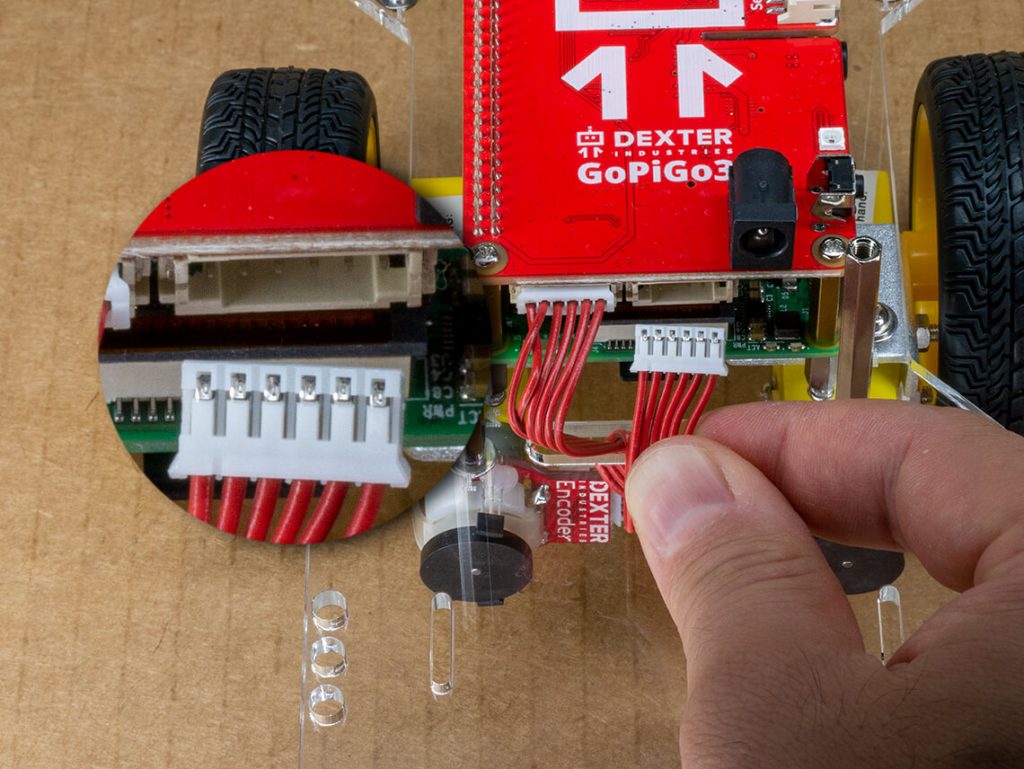
It is very important to ensure that the right motor is connected to the right motor port on the board, and the left motor to the left motor port on the board.
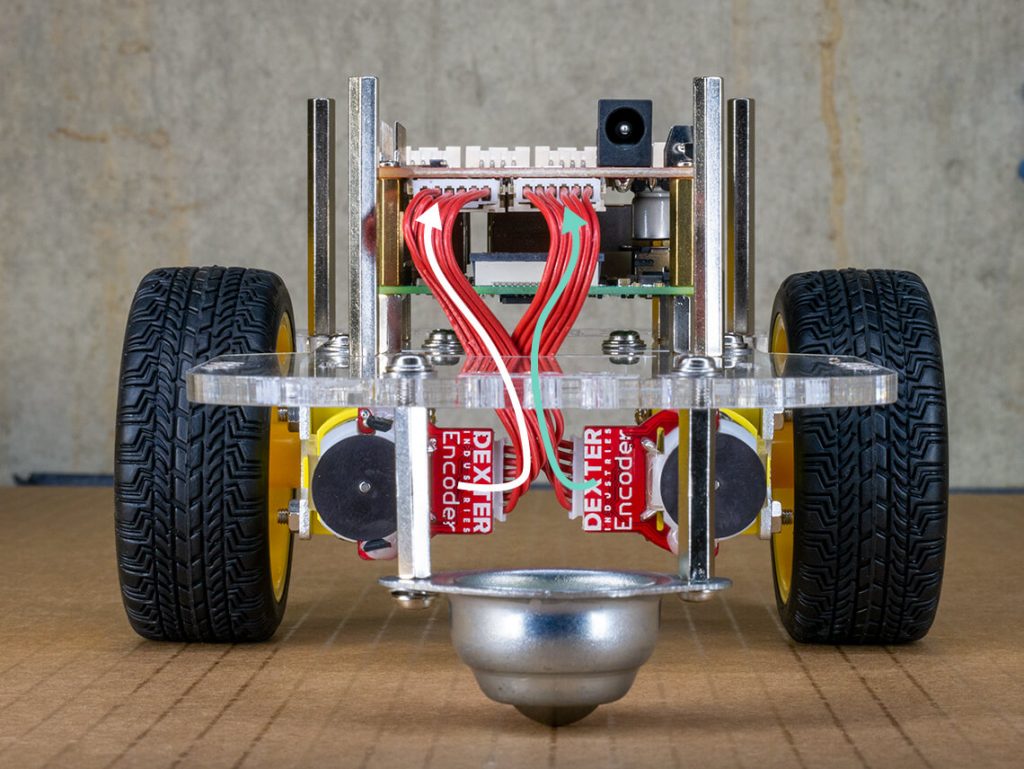
Attach the Canopy
Parts
From the Acrylic Hardware Bag:
- 1 Acrylic Canopy
- 4 Washers
- 4 Short Screws
Steps
Place one washer on each screw.
Gently set the acrylic canopy on top of the four tall silver posts.
There is a small slot cutout on the acrylic for a camera that should be towards the front of the GoPiGo, and the two battery pack slot cutouts should face towards the back.

Secure the acrylic canopy in place with the screws.
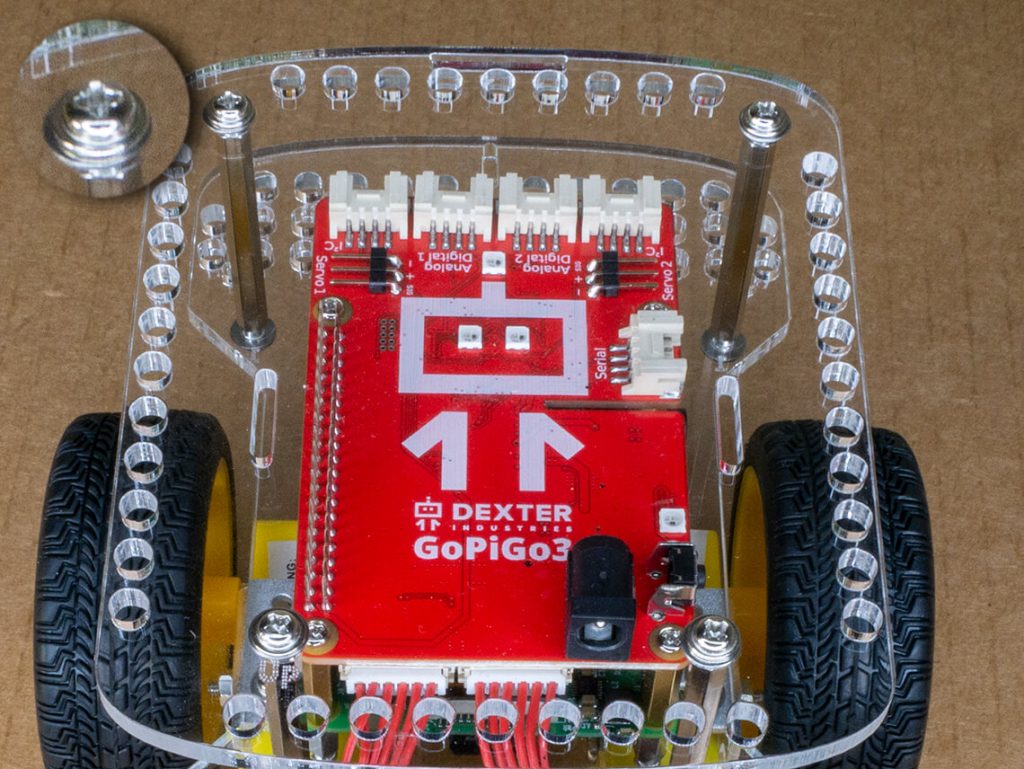
Attach the Battery Pack
Parts
From the Battery Box:
- 1 Rechargeable Battery Pack
- 1 Short Cable
- 1 Red Velcro
Steps
Thread the velcro strap through the battery strap cutouts on the acrylic body.
There are two locations you can put the battery pack:
- in the very back near the caster wheel, or
- the top canopy location provides more traction for use on carpets or slippery floors.
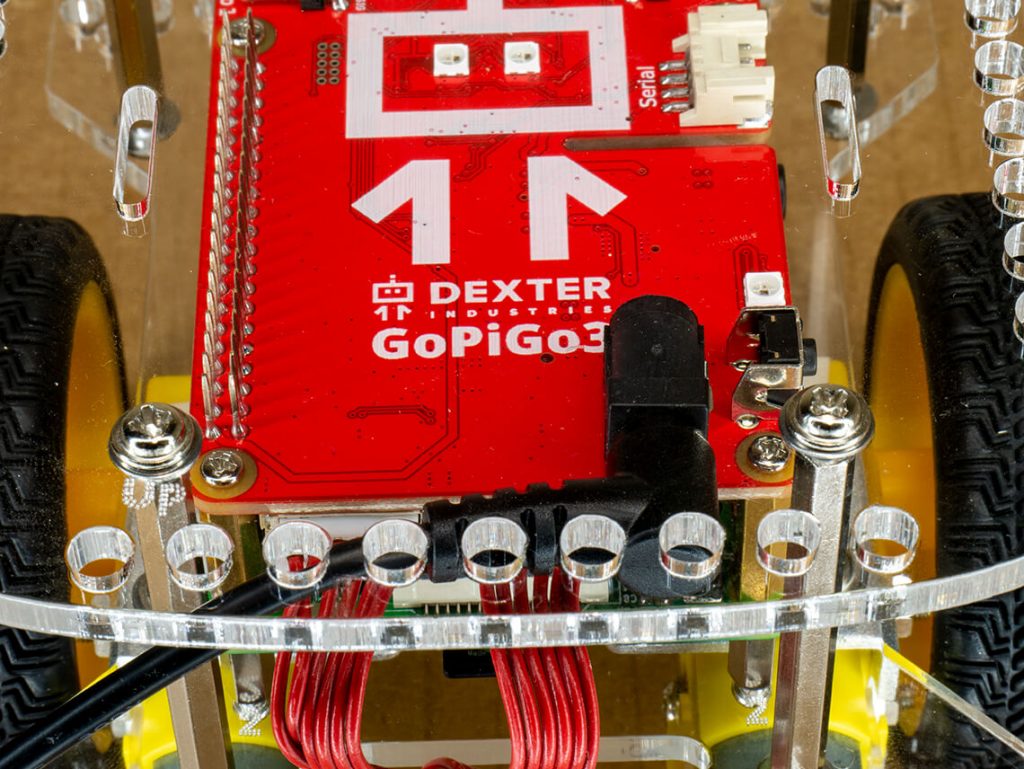
Plug the battery cable into the black power port of the red board (next to the power button).
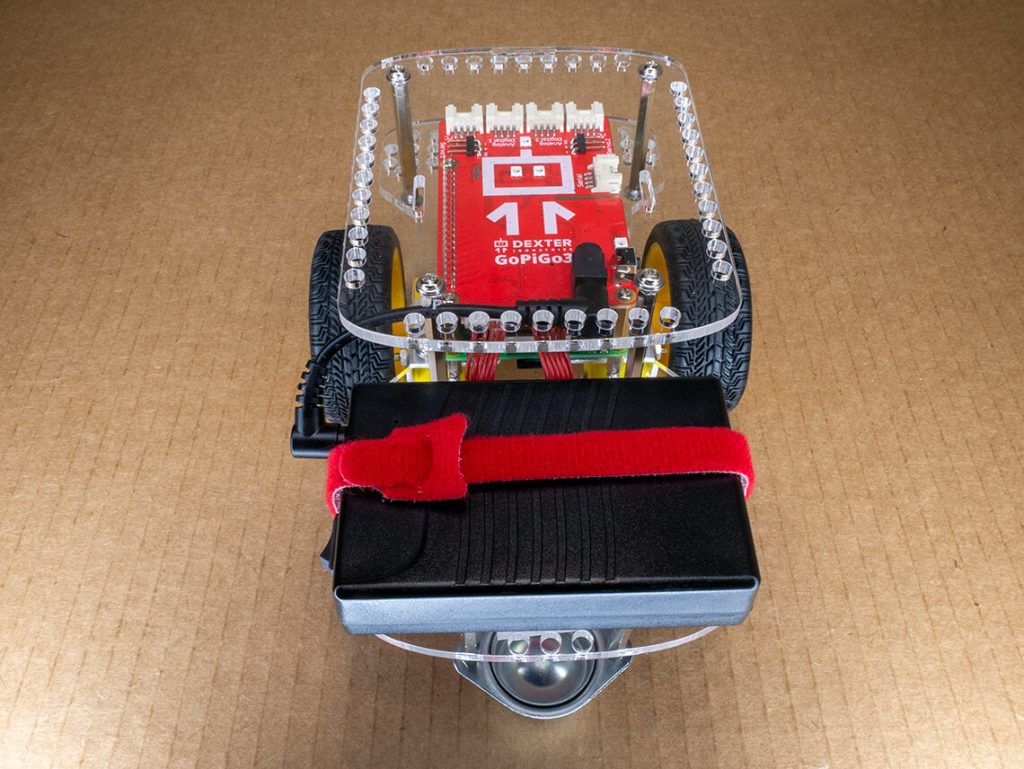
Gently rest the battery pack on your robot.
Secure the battery pack to your robot with the red battery strap.
*Notice the power switch on the battery. The battery will need to be on before starting the robot. However, the robot should be turned off before turning off the battery.
Your robot is ready to program! Learn how to launch DexterOS and Raspbian for Robots here.
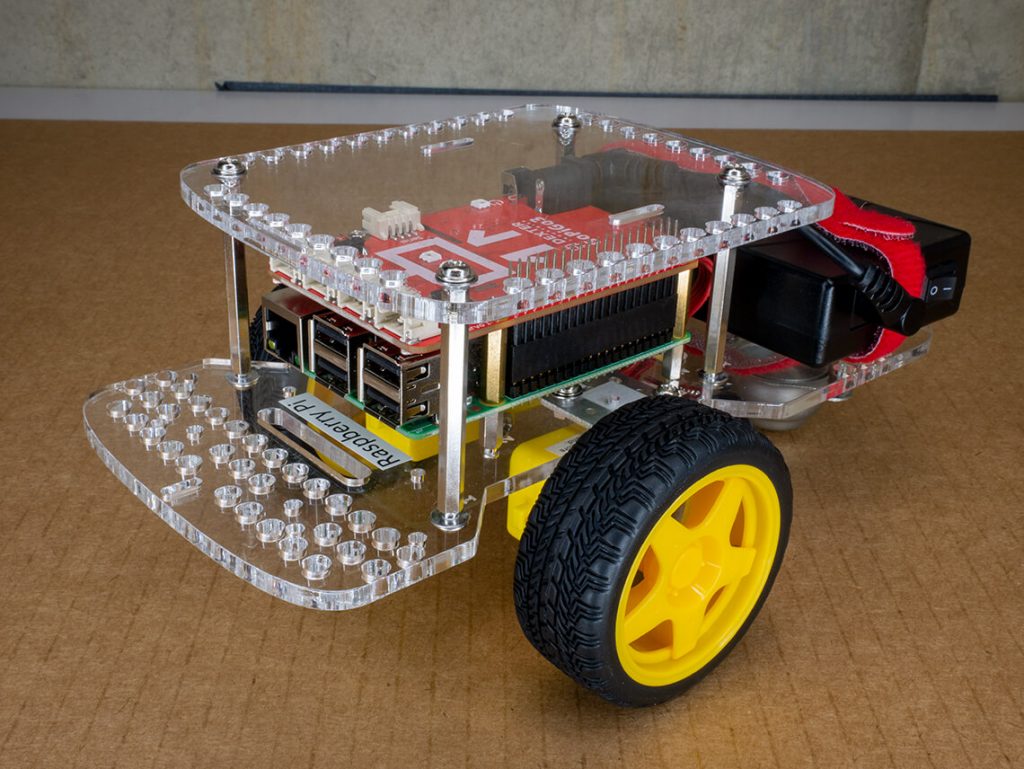
Using the Servo Mount
The GoPiGo has always had the option of a servo mount to scan its surroundings for obstacles. But there’s always room for improvement and we took the time to do just that.
To start, this new servo mount is much easier to assemble than our previous version. Small screws are notoriously hard for little hands. We got rid of the need for screws so more students can focus on the thinking behind their build.
Only Two Parts
The servo mount now only comes in two sections :
- the servo mold itself containing the servo motor,
- a special servo horn that doubles as a sensor mount for the official Raspberry Pi Camera, or the distance sensor. The servo horn can also use LEGO Technic connectors, or the Dexter Industries sensor mount for added functionalities.
Assembly is done in just a few steps.
- Place the servo mold on the robot where you intend to use it,
- Connect it, either to Servo 1 or Servo 2, with the brown wire to the back of the robot. The servo should twitch a little when you connect it.
- If you are using DexterOS, go in Bloxter, and run this:

- Or if you prefer Python, run this:
import easygopigo3 as easy
gpg = easy.EasyGoPiGo3()
my_servo = gpg.init_servo(‘SERVO1’)
my_servo.rotate_servo(90) - Push the servo horn onto the servo itself so it is in the middle position.
That’s it. Done and calibrated.
You Want Flexibility?
We hear you! You would prefer the distance sensor to be as low as possible in order to pick up more obstacles! Check this out… The servo mount can be installed underneath the GoPiGo3 body!
In order to have enough clearance when rotating left and right, you will need a few tweaks:
- Flip the distance sensor upside down so the connector cable is on top,
- Install the distance sensor as high as possible on the horn using the lowest holes.
- Fix the servo mold longitudinally, in other words turn it 90 degrees so that it runs parallel to the wheels.
This will get you an almost full range of motion. Do a few tests to see what the maximum angles you can get before going on with your project.
What about the Camera?
With more and more people getting into computer vision, the need for a camera that can sweep around is growing in interest.
The servo horn has been designed to fit either the Raspberry Pi camera or the distance sensor. Getting panned video is now within reach for all! We think it’s one of the easiest on the market!
As for computer vision, you can try PyImageSearch to get you started.
Even More Flexibility with a Second Sensor!
By inserting the blue sensor mount into the servo horn, you can double the servo load.
- Add a distance sensor and a camera to have them work in sync.
- Add a camera and an LED to indicate when a photo is being taken or video being recorded.
By pairing two sensors on the same servo and using some imagination you can create new interactions!
Blue Sensor Mount or White Sensor Mount?
We have a white sensor mount which has been designed specifically for the official Raspberry Pi camera, and our distance sensor. You can use the white sensor mount if you want both camera and distance sensor on the same servo.
The blue sensor mount is meant for all other Grove sensors.
Building with the improved servo package!
Both the servo mold and the servo horn allow you to build with LEGO Technic beams. You can build a stationary part and a moving part that work together while exploring mechanical engineering concepts.
Can you create a grabber?
Or whiskers that will detect obstacles by touch using button sensors?
Connecting More Sensors
The GoPiGo can also be paired with our in-house sensors. There are a number of digital and analog sensors that can be connected to the GoPiGo. More information about our sensors can be found here.
The Distance Sensor.
The Light & Color Sensor.
The Line Follower Sensor.
The IMU Sensor.
The Infrared Receiver and Infrared Remote.
The Raspberry Pi camera.
